Who are the “Amish Mennonites”?
You may have come across the term “Amish Mennonites” before. It popped up on the site here recently, in our post on the first Amish settlement in America. Both Jim Potter and Al in KY wondered, what does the term mean?
You might see it in some accounts referring to a modernizing group which emerged in the latter 1800s, in contrast to what became the conservative-leaning Old Order Amish.
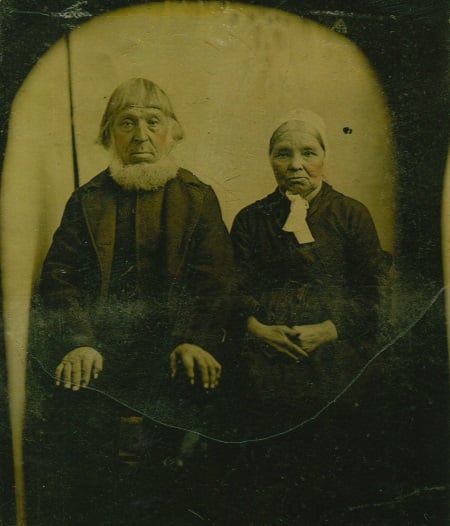
But it is not so clear cut. Here on the historical marker, you can see the term is used to describe that first Amish community at Northkill. This is what prompted our readers’ questions.
Northkill was a much earlier group (circa 1740) which we might retroactively classify with those who became known as Old Order Amish and who we just call “Amish” today.
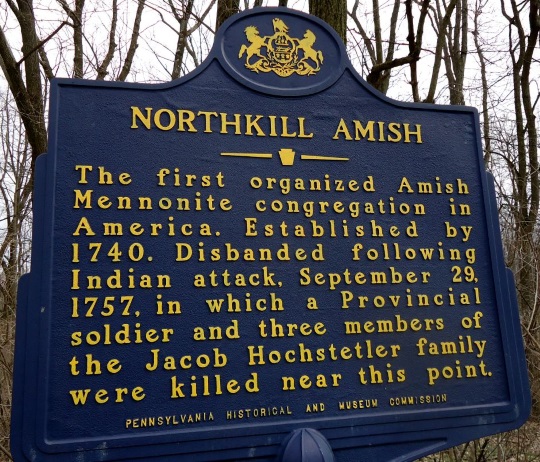
Al writes:
Did this group of people call themselves “Amish Mennonite” or just “Amish”? If they used the term “Amish Mennonite”,was there a time when these people started calling themselves just “Amish”?
When I see the words “Amish Mennonite” used today, I think of some Beachy Amish churches and some non-Beachy Amish churches that are called “Amish Mennonite”. I don’t think of today’s Old Order (or New Order) Amish when I see the term “Amish Mennonite” used.
As Al suggests, you also see the term used today to describe a number of present-day Anabaptist churches.
When I search the term “Amish Mennonite church”, the first three results are Weavertown Amish Mennonite Church in Bird-in-Hand, PA; Harmony Amish Mennonite Church in Clarksville, AR; and Pleasant View Amish Mennonite Church in Buffalo, MO.
Scrolling through the results, there appear to be at least a couple dozen using the term “Amish Mennonite” in their names today.
What does “Amish Mennonite” mean?
So what does the term mean, as it seems to have been used in various ways historically?
I reached out to Young Center Senior Scholar Steven Nolt for an explanation. It was in his book A History of the Amish that I first saw discussion of the term.
Steve kindly obliged with the following response, which I reprint in full below. Hopefully this helps clarify understanding of the term and the various ways it has been used.
Historian Steven Nolt explains
I took the liberty to add links to a couple of terms which Steve uses, for any readers unaware of their meaning:
To avoid too much confusion, I standardized – perhaps anachronistically – some 18th and early 19th century language in History of the Amish. ‘Amish’ often would have been more of an adjective, modifying Mennonite in the 1700s and 1800s. For example, a Revolutionary War meeting between peace church leaders and the Lancaster County Committee of correspondence, July 1, 1775, included “Christian Rupp & Michael Garber, Representatives of the Society of people called Amisch Menonists.”
During the 1860s-1870s when the tradition-minded vs. change-minded sorting-out process took place, the tradition-minded became known as Old Order Amish* and the change-minded retained the Amish Mennonite designation. Later, of course, the Amish Mennonite streams mostly merge with various Mennonite bodies and gave up any Amish designation.
So to impose a kind of nominal uniformity on a story that already has a confusing number of names, I use the term Amish to describe groups through about 1860, then Old Order Amish and Amish Mennonite to describe the two broad camps coming out of the Diener-Versammlungen. But the term Amish Mennonite is sometimes there in sources before 1870s, designating the broader pre-Diener-Versammlungen churches generally.
And then after 1927, with the emergence of the Beachy Amish, the Amish Mennonite name reemerges! Also the so-called Sleeping Preacher/Tampico Amish groups have often used the Amish Mennonite designation. These 20th century groups that use the Amish Mennonite name sometimes use(d) a hyphen (Amish-Mennonite) but not always. I don’t think I’ve ever seen the hyphen used in the 19th century.
Also, it’s interesting to note that nowadays, most Old Order Amish settlement directories and other publications just say “Amish.” Horse-and-buggy groups have become so associated with the name Amish that the Old Order part doesn’t always need to be said. It is now incumbent upon, say, Beachy Amish folks to call their directory an Amish Mennonite directory.
–Steve Nolt
* Sometimes the language of Old Amish Mennonite or Old Order Amish Mennonite was used in the later 1800s, and by academics into the 20th century. When I was working in a college library in the 1980s, filing cards in the library card catalog (remember card catalogs?!) the Library of Congress subject heading for the Old Order Amish was still “Amish Mennonites – Old Order.” LC subject headings are slow to change, and the “Amish Mennonites – Old Order” reflected an early twentieth century way of categorizing the group that had emerged out of the Diener-Versammlungen just a generation earlier. There was also an LC subject heading “Amish Mennonites – Conservative” which referred to what was, by the 1980s, the Conservative Mennonite Conference.



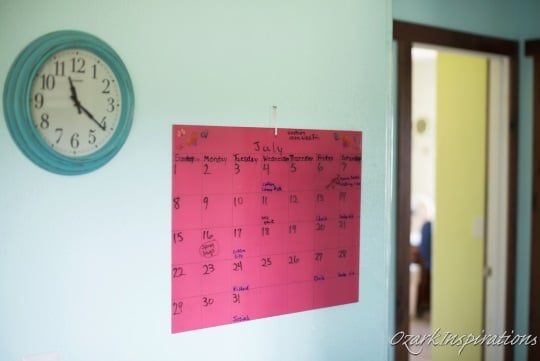

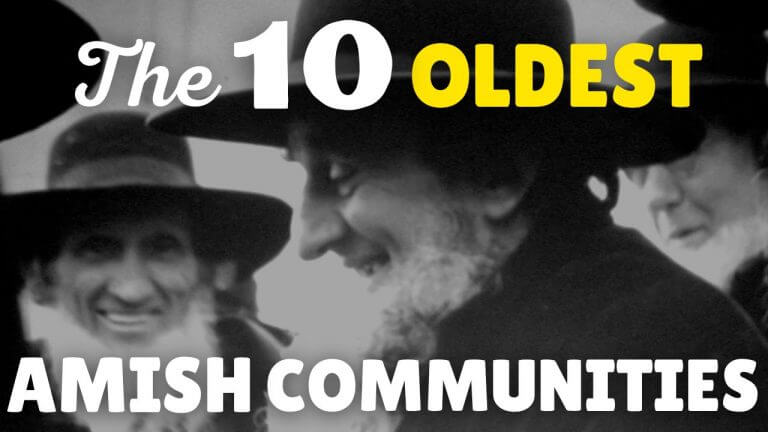
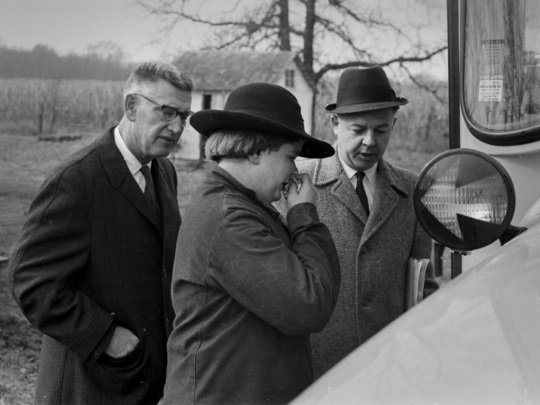
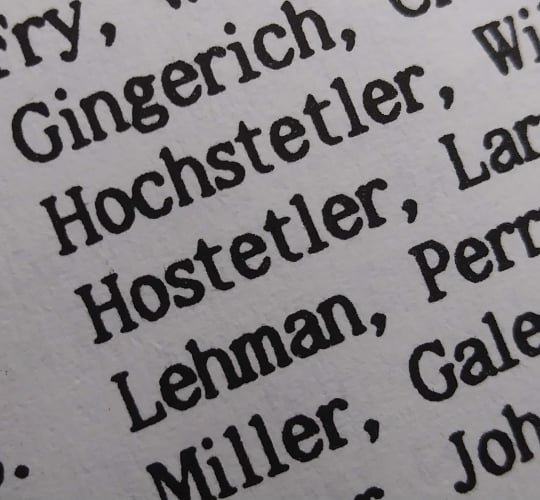
Numerous Amish-Mennonite Churches....
There are numerous self-described “Amish-Mennonite” churches throughout North America. Many are independent, but all of them are conservative, plain or semi-plain, and believe in “non-conformity”. Some are tiny. Others are large. Yes, some are affiliated with the “Beachy” Amish, but many are not. We must remember that Jakob Amman was a Mennonite preacher. His followers became known as “Amman-Mennonites” or “Amish-Mennonites”. Some maintain that the Amish are really an offshoot of the Mennonites.
Who Are the Amish Mennonites?
There is little I know about the “Amish Mennonites”. But I know for a fact that on my mother’s side of her family there were “Mennonites”. I have the old photo’s with the men wearing very long beards and the women wearing long dresses that covered their ankles and their hair was long past their knees. My mother’s grandfather William J. Gossett was a traveling circuit preacher and crossed the prairies. Brn in Kentucky and others born in Indiana .
Also there are alot of “Pennsylvania Dutch” in the family which I never understood what that means because I was interested in my fathers side of the family. I vaguely recall being told it meant that we are also part “Dutch” as well as “German” but also “Scotch/Irish”, and some folks came from Pennsylvania. I don’t know whether or not any of the “Scotch or Irish” were “Amish” or “Mennonite”. I don’t know if William J. Gossett was a “Mennonite”. My cousin researched the Gossett family and published a book about the Gossetts and drove all over the west coast and midwest, etc. to hand deliver free copies to Historical Societies. She did know for a fact that there were “Mennonites” in the family. So it is an “inherent” appreciation and respect that I have for the “Amish”. I even got my sweet “Aussie’ from the “Amish” last summer and he has a very sweet spirit and he is a very happy puppy because he came from good family. Even though he have no sheep for him to herd he definitely enjoy’s watching them and the horses and cattle on the old Western Movies that I watch. I do appreciate what the author of “Who Are the Amish Mennonites”? has provided and thankful to read it. Thank you and God Bless
There is an Amish Mennonite church in Guys Mills, Crawford County, Pennsylvania called Plainview Gospel Amish Mennonite Fellowship.
I don’t know anymore about it, but here’s their url. There are Old Order and New Order Amish, and Mennonites throughout the area.
https://plainviewgospel.org/
Pennsylvania Dutch
From what I’ve read and been told, the term Pennsylvania Dutch came from the earlier Amish being asked what language they were speaking and would reply “Deutch” meaning German. It was merely a miscommunication on the part of the English, who thought they were saying Dutch. Makes sense to me.
My grandmother was a Huffstutter from Indiana. Amish?
Father German immigrant, but mother comes from German speaking Tennessee farmers who came from Indiana. That’s all I know.
Thanks, Erik for this most interesting update on the “Amish Mennonites”.
And thanks for reaching out to Steve Nolt to help in our understanding of the history of the usage of “Amish”,”Amish Mennonite”, etc. This history is sort of complex, and Steve Nolt has done a good job of making it understandable.
Agreed Al, and I’m glad that Steve took the time to give such a thorough answer. I was originally going to just add it to the comment thread but thought it ought to have its own post.
Mennonites
Erik,
Thanks for posting this information on th Mennonits. I know of several Mennonite “Fellowship” churches in the upstate New York region. Mennonites have churches, the Amish worship in Amish homes. Mennonites in this region have “Yankee” type employment such as teacher, lawyers, health care. And often have higher education – nursing degrees, degrees in agriculture, business degrees, etc. They look like “The English” but at home are quite conservative, oftentimes can be seen driving buggies and looking similar to Amish. Many Mennonites home school, but then transfer to some public high school to better prepare for college.
I was happy to post this as I have found myself wondering at the different uses of the term before. I thought Steve’s explanation made it pretty clear.
Just curious, you used the term “Yankee”, are there any Amish in your area who use that to describe non-Amish? I know the Clymer area was settled by Geauga County Amish, where the term is commonly used for English.
The English, The Yank
Erik,
Central New York and up through Clinton county [and not so much Western New York] refer to non-Amish as The English, Englishman, Yankees, or The Yank. For example,
We expect a great amount of “The English” to be at the auction in Little Falls tomorrow.
The “Englishman” Miller [there are Amiah Miller surnames] is dropping off tact for fixing today.
“Yank” Johnson came with his own tools.
The Yankees from Herkimer are moving two sheds to Paletine tomorrow.
Yup, the “Yanks” sure do like their snowmobiles!
Sarah, “The English” women there are looking to know about quilts.
It’s never done out of disprespect and is simply part of the Central/North East New York Amish dialoge used mostly for clarification.
A Church is an army
Can you turn not Amish..?
Can you be Amish and not know..?
When I read the Bible… after I finish the 4th chapter
That is all I need to know- Bible finished- The proof is death.
(except I don’t know why I should be afraid of electricity).
… is it electricity,money,, or both/more..?
Changing Church
I follow a Mennonite women on her Youtube channel. She is originally from Ohio. In a Q&A video she stated that her family used to be Amish but after some talk of families leaving the whole church became Mennonite. Have you heard of this group. Seems like an interesting story.
Susan, I don’t know that one, but sounds interesting. Is there a link you could share?
Thank you
Thank you for a little clarity. My family of origin immigratted to PA in 1742 and were always referred to as Amish Mennonite and Pennsylvania Dutch or at least that is my oral history. Seeing the term used interchangeably over the years has confused me about our heritage.
Glad if it gave clarity Amy, I’m happy Steve took the time to lay it out for us.
By the way have you ever been to Zook House in the Malvern area? Might be of interest from a historical perspective. I took some of my Zook friends to visit once: https://amishamerica.com/singing-eagles-the-zook-house-and-my-new-book/
Evolution of the Faith and its Descriptor
My parents were raised and (in 1940) married in the Amish Mennonite Church (no hyphen). This church was started by Mennonite immigrants (including my great-grandparents from Switzerland)from both the old country and those who came via Ontario, (Waterloo area)Canada. These origins of the Amish Mennonite Church in northern New York state are easily traceable as they go back only to the mid 19th century. Incidently, this particular sect had no relationship with the Beachy Amish, to my knowledge. The Amish Mennonite Church that my family belonged to evolved into a Mennonite church and became part of the conservative conference. Fifty years later to the present (from the time of my boyhood), that Mennonite Church is now a congregation of Mennonite Church USA and bears little to almost no resemblance to the church in which I was raised and certainly no commonality to the Amish Mennonite Church into which my mom and dad were born. I relate this history of transition to you simply because I think that it in general, it answers the question of Who are the “Amish Mennonites”. In the case of my ancestors, they were anabapttists who had a blended identity of both the Amish and Mennonite paths and eventually moved to the much more liberal side of Mennonite, retaining primarily their surnames and their anabaptist identity.